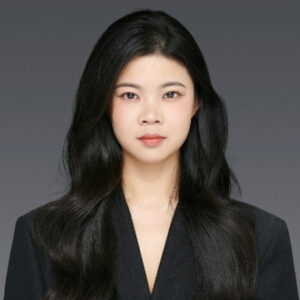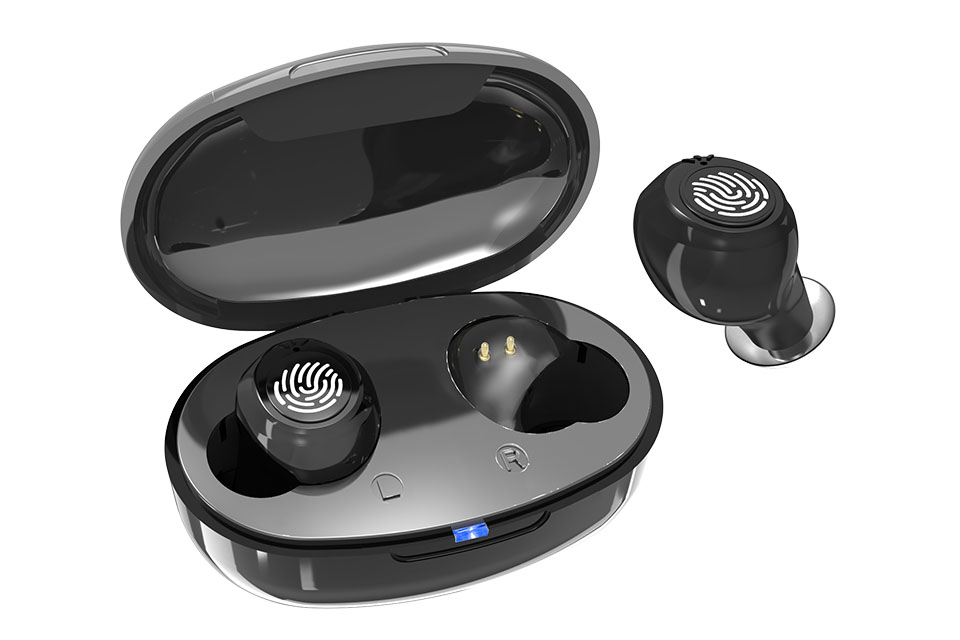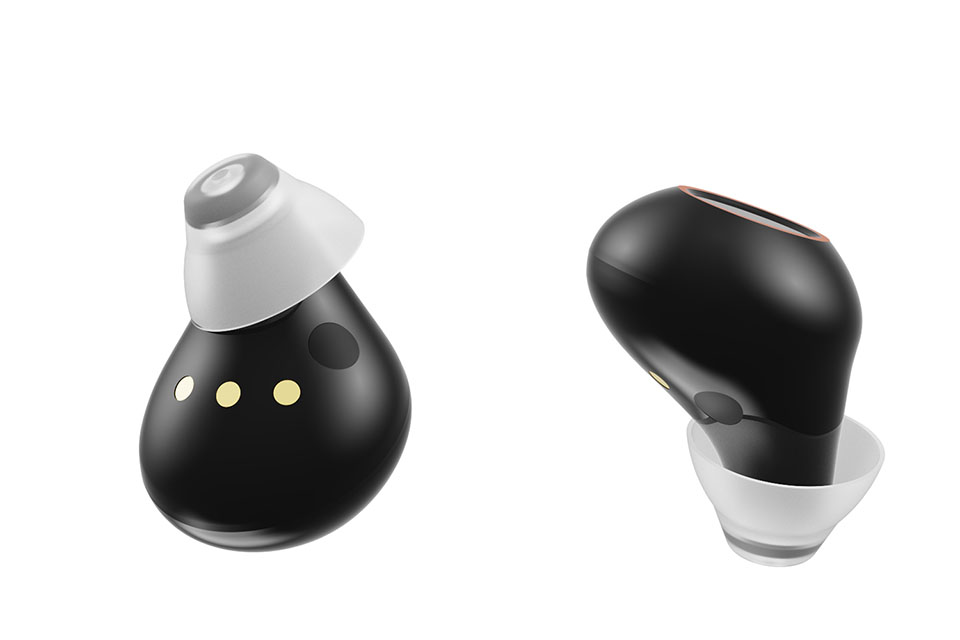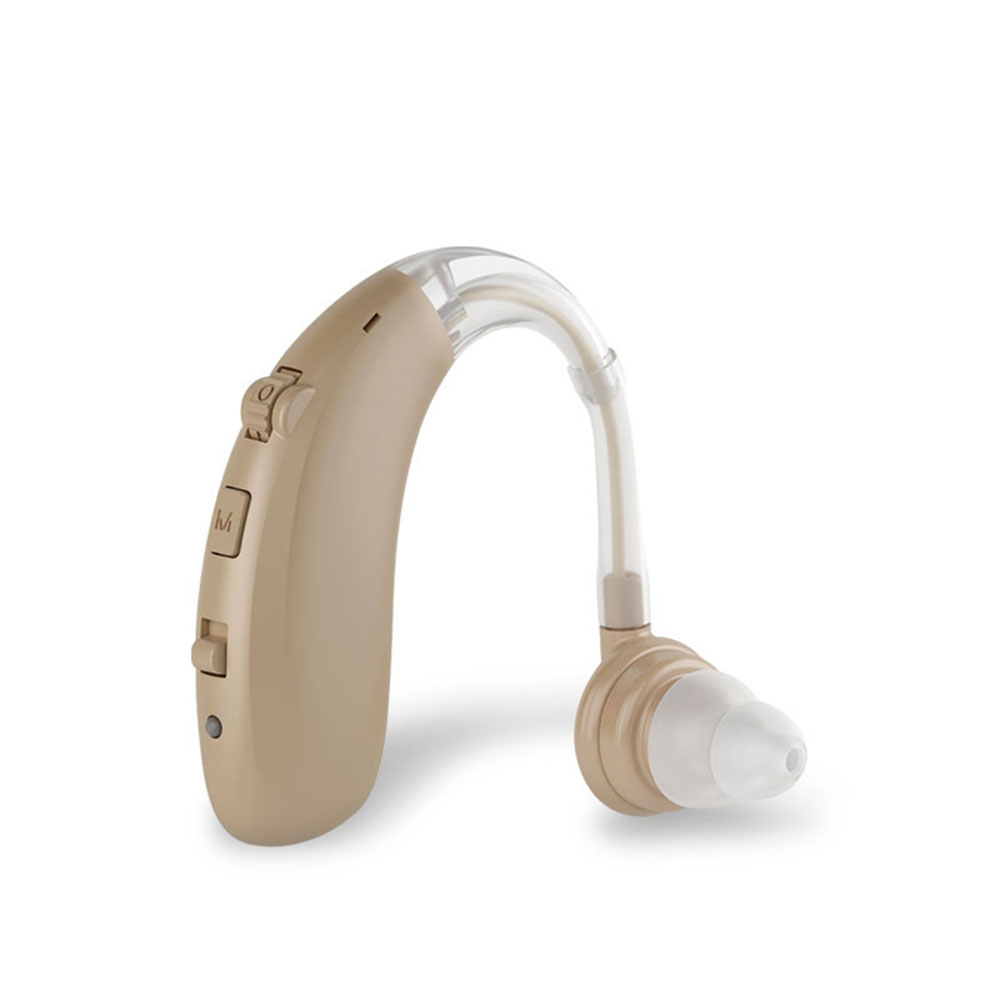1. Hardware Architecture of Modern Hearing Aids
Today’s hearing aids are miniature marvels of engineering. They pack powerful components into tiny, comfortable designs.
Key Components:
- MEMS Microphones: Ultra-small, high-sensitivity mics that pick up clear sound.
- DSP/SoC Processors: Low-power chips for real-time sound processing.
- Rechargeable Batteries: Li-ion/Li-Po for all-day use.
- Wireless Tech: Bluetooth LE Audio for seamless connectivity.
Why It Matters: Better hardware means clearer sound, longer battery life, and smarter features.
Our Advantage: We produce 3 million units yearly with ISO-certified precision.
2. Advanced Signal Processing Algorithms
Hearing aids now use AI-driven noise reduction and adaptive beamforming to focus on speech.
Breakthrough Features:
- Noise Cancellation: AI filters out background noise.
- Sound Separation: Isolates voices in crowded places.
- Feedback Control: Stops whistling and echoes.
Benchmark Results:
| Feature | Latency | Power Efficiency |
|---|---|---|
| AI Noise Reduction | <5ms | High |
| Beamforming | <3ms | Medium |
Why It Matters: Smoother, more natural hearing in any environment.
Our Solution: Custom DSP tuning for crystal-clear audio.
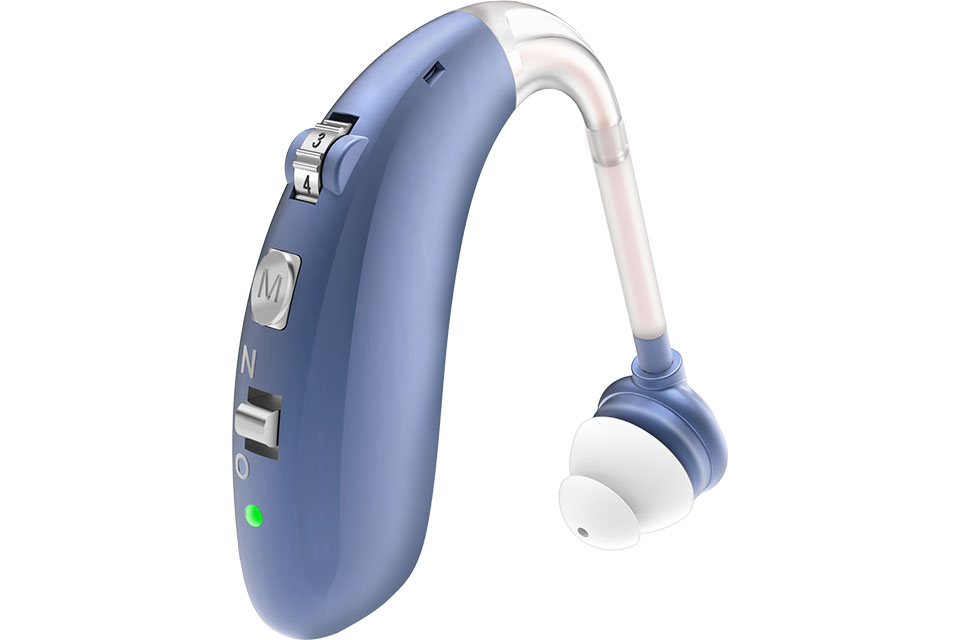
3. AI Integration & Emerging Tech
AI is changing hearing aids forever.
2024 Innovations:
- Real-Time Personalization: Learns your hearing preferences.
- Predictive Sound Adjustments: Adapts before you enter noisy places.
- Hybrid Cochlear Implants: Combines sound and electric stimulation.
Future Speculation (2025-2030):
- Neuromorphic chips for brain-like processing.
- Biomarkers to detect hearing health issues early.
Our Edge: We integrate latest AI models into OEM/ODM designs.
4. UX & Connectivity Beyond Clinical Use
Hearing aids now work with smartphones, TVs, and smart home devices.
Key Features:
- App Control: Adjust settings via phone.
- Auracast Support: Stream audio directly.
- Voice Assistant Integration: Hands-free commands.
Challenges:
- Elderly Usability: Big buttons, simple menus.
- Battery Life: Balancing features with power use.
Our Strength: Custom Bluetooth hearing aids for seamless connectivity.
5. Disruptive Audiotech Alternatives
Not all hearing solutions are traditional.
New Options:
- Bone Conduction (Osia): Bypasses the ear canal.
- Hair Cell Regeneration: Experimental but promising.
- Neuromodulation: Stimulates auditory nerves.
Pros & Cons:
| Technology | Pros | Cons |
|---|---|---|
| Bone Conduction | No ear blockage | Lower sound quality |
| Regeneration | Potential cure | Still in trials |
Our Offer: We also make bone conduction hearing aids.
6. Market Leaders & Tech Strategies
Top Brands & Their 2024 Tech:
- Sonova: Binaural processing.
- GN Hearing: Eco-friendly materials.
- Starkey: Health tracking sensors.
Patent Trends:
- More AI, rechargeability, and miniaturization.
Our Role: We supply OEM hearing aids to these brands.
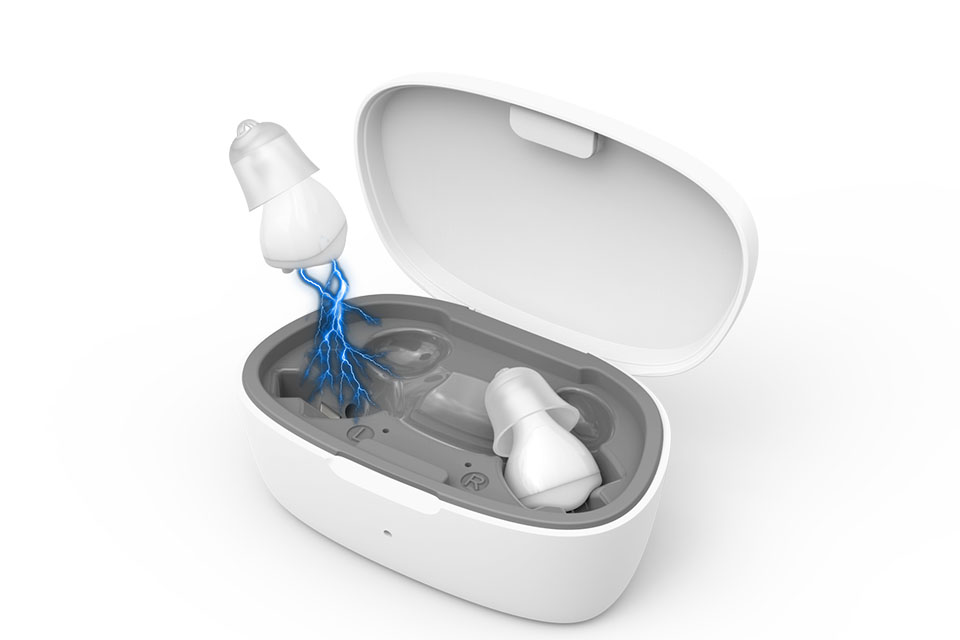
7. The Future: Trends & Bottlenecks
2025-2030 Predictions:
✅ Neuromorphic chips for smarter processing.
✅ Biomarkers for early hearing loss detection.
❌ Battery life still a challenge.
Our Promise: We stay ahead with next-gen R&D.
Why Choose Us?
✅ 10+ Years Expertise – Trusted by top brands.
✅ ISO-Certified Factory – 3M units/year capacity.
✅ Bluetooth & AI-Ready – Future-proof designs.
Need a reliable OEM/ODM partner?
👉 Contact Us Now
Internal Links for Further Reading:
Final Thought: The hearing aid industry is evolving fast. We help brands stay ahead. 🚀


